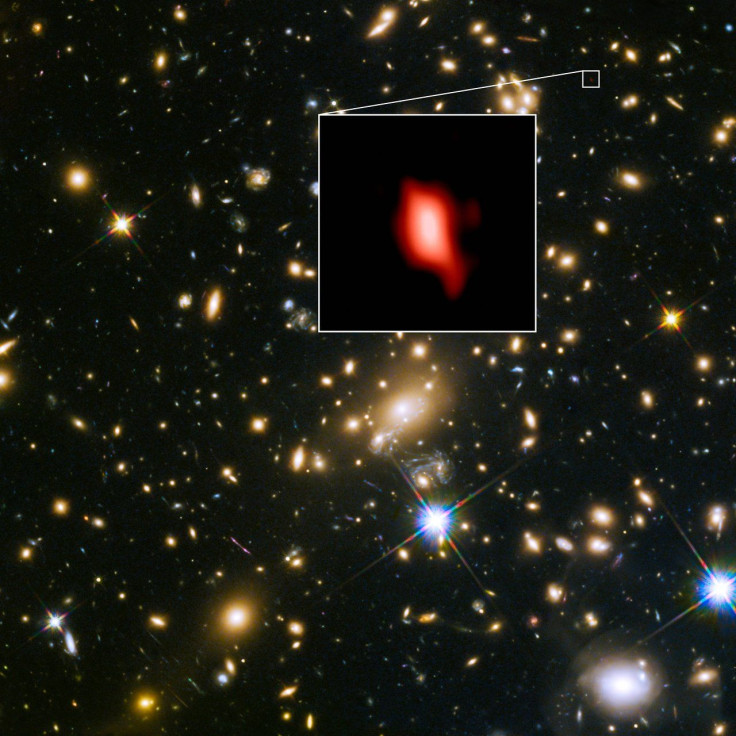Oldest Oxygen Shows Earliest Stars Formed 250 Million Years After Big Bang

Some 13.3 billion years ago, when the universe was still in its infancy — barely 500 million years old, or about 3.5 percent of its current age — there was already ionized oxygen in galaxies at the time. The discovery, made by the Atacama Large Millimeter/submillimeter Array (ALMA) of radio telescopes in Chile, provides the first tangible evidence that the earliest stars existed as long ago as a mere 250 million years after the Big Bang.
In the beginning, there was only hydrogen, the simplest of elements, permeating the early universe, before heavier elements began forming. A previous estimate, based on the interaction of hydrogen with the ultraviolet radiation from the earliest stars, put the stars’ age at about 180 million years after the Big Bang. But this new discovery is based on more definitive proof.
“I was thrilled to see the signal of the distant oxygen in the ALMA data. This detection pushes back the frontiers of the observable Universe,” Takuya Hashimoto, the lead author of the new paper and a researcher at both Osaka Sangyo University and the National Astronomical Observatory of Japan , said in a statement Wednesday.
The oxygen signal was observed from an ancient galaxy, MACS1149-JD1, which is the most distant galaxy observed yet.
“This galaxy is seen at a time when the Universe was only 500 million years old and yet it already has a population of mature stars. We are therefore able to use this galaxy to probe into an earlier, completely uncharted period of cosmic history,” Nicolas Laporte, a researcher at University College London (UCL) in the United Kingdom and second author of the new paper, explained in the statement.
Since oxygen first formed due to the process of nuclear fusion in the oldest stars, and was released when they died, the discovery of oxygen in MACS1149-JD1 means stars had existed long before the oxygen came to be. It would have taken several cycles of star-birth and supernova explosions for there to be enough oxygen to be detected by our instruments today, considering the fact that the oldest stars — called Population III stars — had extremely short lifespans of about 2 million years only.
“The mature stellar population in MACS1149-JD1 implies that stars were forming back to even earlier times, beyond what we can currently see with our telescopes. This has very exciting implications for finding ‘cosmic dawn’ when the first galaxies emerged,” Laporte said in another statement, referring to the time when the earliest galaxies emerged from the complete darkness of the early universe.
Richard Ellis, senior astronomer at UCL and coauthor of the paper, said in the statement: “Determining when cosmic dawn occurred is akin to the Holy Grail of cosmology and galaxy formation. With these new observations of MACS1149-JD1 we are getting closer to directly witnessing the birth of starlight! Since we are all made of processed stellar material, this is really finding our own origins.”
Titled “The onset of star formation 250 million years after the Big Bang,” the paper, involving a large international team of researchers, was published online Wednesday in the journal Nature.
© Copyright IBTimes 2025. All rights reserved.





















